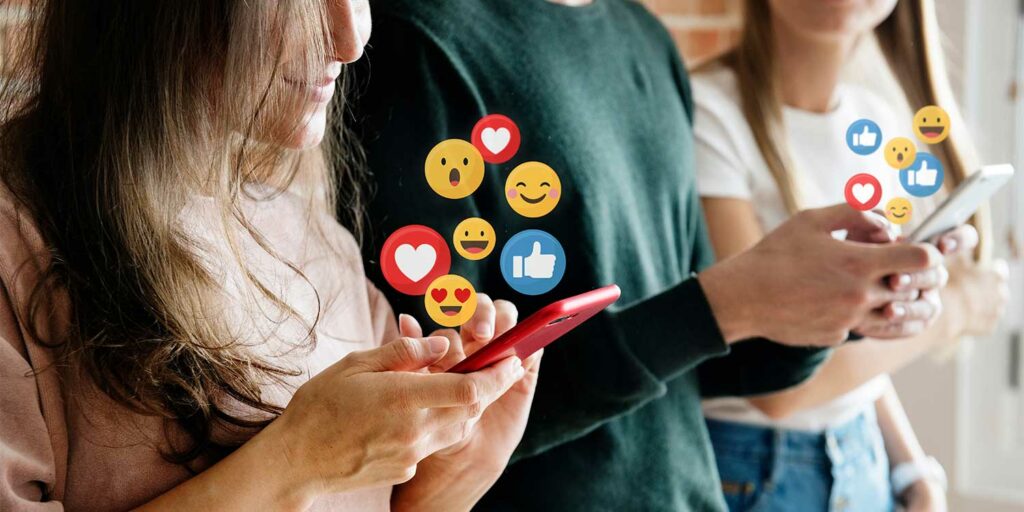Texting has become a default mode of communication in business today, but without proper texting etiquette, it’s easy for miscommunication to occur. A quick text message can save time, yet those same short messages often lack tone and context. The result? Messages that are meant to be efficient can sometimes be misunderstood, and miscommunication in the workplace can lead to real consequences. In fact, research shows people think their messages are understood 90% of the time, but the reality is only about half get through as intended. That gap leaves a lot of room for confusion and errors.
Misunderstandings over text aren’t just hypothetical. One survey found that one in five people have assumed someone was upset with them because they misread the text’s tone. We’ve all been there, staring at a one-word reply like “K” or a brief “We need to talk,” and spending unnecessary time puzzling over what it really means. In fact, 4 in 10 adults admit they’ve overanalyzed texts or emails for this very reason. Without hearing a voice or seeing body language, the human mind tends to fill in the blanks with the worst interpretations. Texting etiquette isn’t just about politeness. It’s about making sure your meaning is clear.
Decision-makers and leaders need to be aware that these misunderstandings carry a cost. More than 90% of workers say their messages have been misunderstood or misinterpreted at work, and about 1 in 5 have even faced reprimands or worse as a result. Miscommunication drains productivity and morale, costing U.S. businesses an estimated $128 billion annually. The good news is that by following some guidelines for respectful texting, you can avoid common pitfalls. Here are essential tips to improve your professional texting etiquette and keep your business communications crystal clear:
Choose the Right Medium for the Message
Not everything should be said over text. If you need to discuss a serious issue, complex topic, or anything sensitive, consider a phone call, video call, or face-to-face meeting instead. Text messages lack the cues of in-person conversation, so detailed or emotionally charged discussions can easily go awry via SMS. For example, delivering bad news or critical feedback by text is usually a texting miscommunication waiting to happen as the recipient might perceive you as cold or harsh. When in doubt, remember that a phone call can be “worth a thousand emails” (or texts) in conveying tone and building understanding. Save texting for what it does best: quick updates, confirmations, and informal check-ins, not everything under the sun.
Timing Matters So Respect Texting Hours
Good texting etiquette includes sending messages at appropriate times. A work-related text at 11:30 PM might alarm the recipient or come off as intrusive. Generally, try to avoid texting colleagues or clients outside of normal business hours (e.g. before 8 AM or after 6 PM) unless it’s truly urgent. Everyone deserves to maintain a work-life balance, and a late-night ping could be misread as an emergency or create anxiety. Also, be mindful of time zones if your team or customers are global. If you must message off-hours, consider prefacing with “Sorry for the late text” or use scheduling features to send texts at a proper hour. Texting protocol also means being timely on your end: during the workday, respond within a reasonable time frame. Even a quick “Got it, talk soon” acknowledgment is better than silence. Prompt responses show professionalism and prevent the other person from misinterpreting a delay as disinterest or neglect.
Be Clear and Avoid Ambiguity
Texts are meant to be concise, but don’t sacrifice clarity. Avoid vague messages that leave your recipient guessing. A text like “Can we talk?” or “We need to discuss” with no context can cause needless panic or confusion. Instead, include a brief detail: “Can we talk about the sales report this afternoon?” provides context and reduces misunderstanding. Similarly, be careful with one-word answers. A solitary “Fine.” or “K” might come across as passive-aggressive when you only meant simplicity. In professional text messages, it’s often better to write a complete sentence or add a few words of context so your tone doesn’t get lost. Remember, miscommunication is always a risk when content is sparse or unclear, so spell out important details. If you’re confirming a meeting, for example, double-check you’ve included the time and time zone or location to avoid any mix-ups. Guidelines for respectful texting also suggest you proofread for autocorrect errors or missing words that could confuse your message.
Mind Your Tone (Since Text Lacks It)
Tone is the subtext that often doesn’t translate in text. In face-to-face chat, about 93% of communication is nonverbal cues like facial expression and tone of voice. Via text, you’re potentially relying on just the 7% that are words. That means you should pay extra attention to conveying warmth and intent in writing. Polite phrasing goes a long way. Start with a greeting or use the person’s name for a friendly touch (“Hi Alex, could you send the file…”). Use “please” and “thank you” to ensure a respectful, positive tone. These texting manners can prevent a message from being taken the wrong way. If you’re unsure how a message might come across, read it over imagining you are the recipient. When in doubt, err on the side of sounding a little more upbeat or courteous in text to avoid a misunderstanding and miscommunication about your attitude.
Use Emojis and Emoticons Wisely
In a professional context, emojis should be used with caution, but they can be helpful tools to clarify tone. Adding an emoji can remove emotional ambiguity, helping recipients interpret the tone as you intended. That said, know your audience. In some corporate cultures or with more traditional clients, too many emojis might be seen as unprofessional. Gauge what’s appropriate for your audience. Essentially, use emojis as tone insurance sparingly. They’re a modern form of texting etiquette that, when used judiciously, can prevent miscommunication by injecting a human touch into otherwise flat text. If you’re not sure an emoji is appropriate, you can also use words to indicate tone (e.g. “I’m excited about this project” explicitly shows positivity that might not come through in a plain text).
When Miscommunication Happens, Clarify Quickly
Despite our best efforts, misunderstandings and miscommunications can still occur. The moment you sense a text exchange is going off-track, address it. Don’t be afraid to pick up the phone or jump on a quick video chat to clear the air. A brief call can resolve in minutes what might become a lengthy, painful back-and-forth over text. You can also clarify in text by literally spelling out your intent: “I realize that might have come off short. I meant that last message in a supportive way.” It’s far better to proactively clarify than let a small misunderstanding grow into a larger problem.
Quick Dos and Don’ts of Texting Etiquette in the Workplace
Here are some quick texting etiquette tips to reinforce in your organization:
- DO keep messages clear and concise. Get to the point, but include enough context to avoid confusion.
- DO proofread your text for tone, clarity, and typos before sending. An extra moment can save hours of misunderstanding.
- DO reply in a timely manner, especially during work hours. If you need more time, send a brief acknowledgment so the sender isn’t left wondering.
- DON’T use texting for sensitive or complicated conversations. Switch to a call or in-person meeting to ensure issues are fully understood.
- DON’T assume tone. If a message you receive seems unclear, ask for clarification instead of stewing in misinterpretation.
- DON’T send texts when you’re emotional or upset. Cool down first. A rushed text can be easily misread and hard to take back.
Take the Guesswork Out of Business Texting
Even with the best texting etiquette, keeping communication clear across teams and with customers can be a challenge. That’s where TextMyBusiness helps. Our platform centralizes all your business texts, gives you tools to schedule and segment messages, and helps your team stay professional, responsive, and on-brand. Explore how TextMyBusiness can simplify communication and reduce miscommunication in your workplace.






